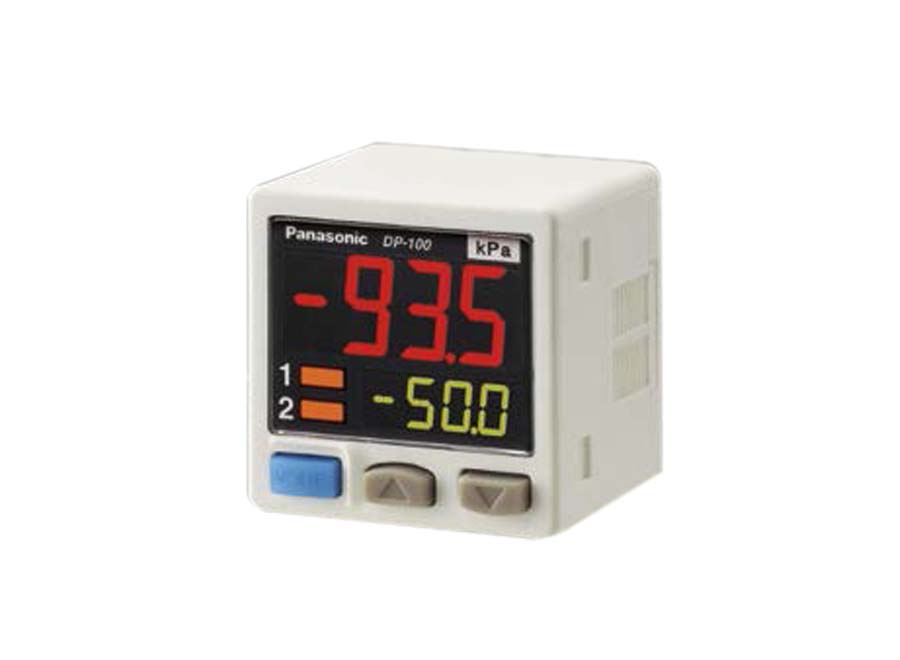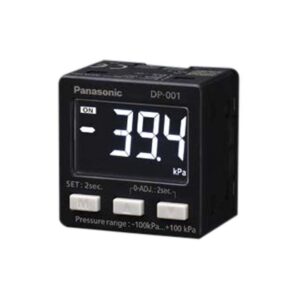DP-102-N-P
Dual Display Digital Pressure Sensor [For Gas]
● Pressure Range : -0.1 to +1.000 MPa
● Pressure Port : M5 Female Thread + NPT 1/8 male Thread
● Output : 2 x PNP
● Connector Type
-
Product category
-
sub-category
-
Partner name
-
Series name
Attributes
Type
Gauge Pressure (For Gas)Shape
SquareApplicable fluid
Non-corrosive gasPressure Range
-0.1 to +1.000 MPaPressure Port
M5 Female Thread + NPT 1/8 male ThreadOutput
2 x PNP
| Type | Gauge Pressure (For Gas) | Shape | Square | Applicable fluid | Non-corrosive gas |
| Pressure Range | -0.1 to +1.000 MPa | Pressure with standability | 1.5 MPa | Pressure Port | M5 Female Thread + NPT 1/8 male Thread |
| Selectable Unit | MPa, kPa, kgf/cm2, bar, psi | Digital Display | Yes | Output | 2 X PNP |
| Output Operation | NO / NC Selectable | Input supply | 12 to 24 VDC | Connection Type | Connector Type |
| Response Time | 2.5 ms | Enclosure | PBT | Protection | – |
| Particular Characteristics | 4 digits + 4 digits 3-color LCD Display |





















































